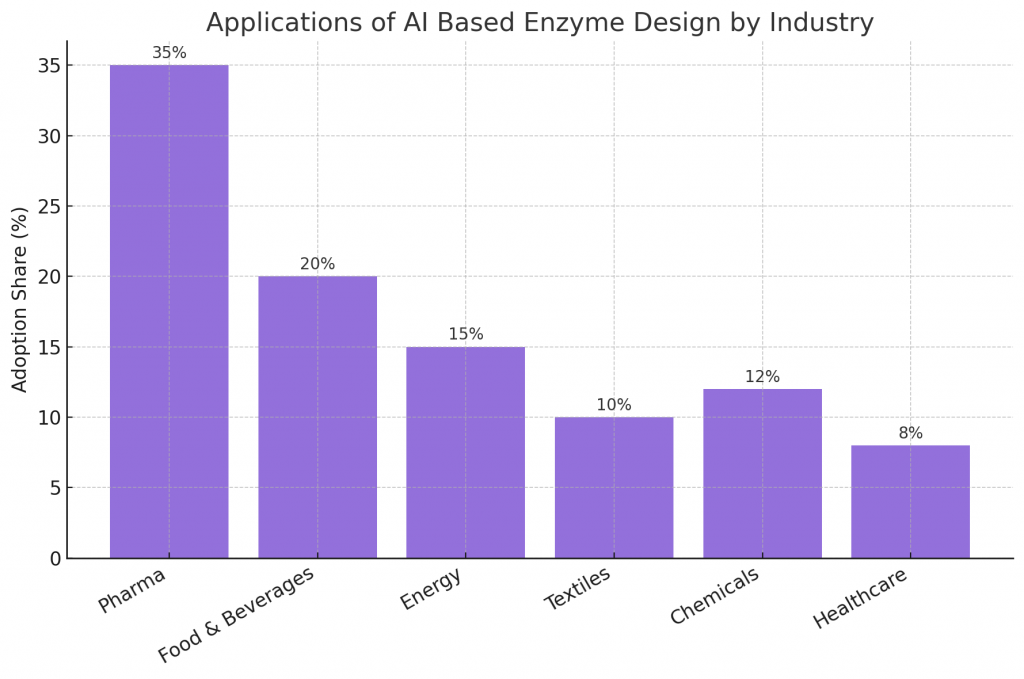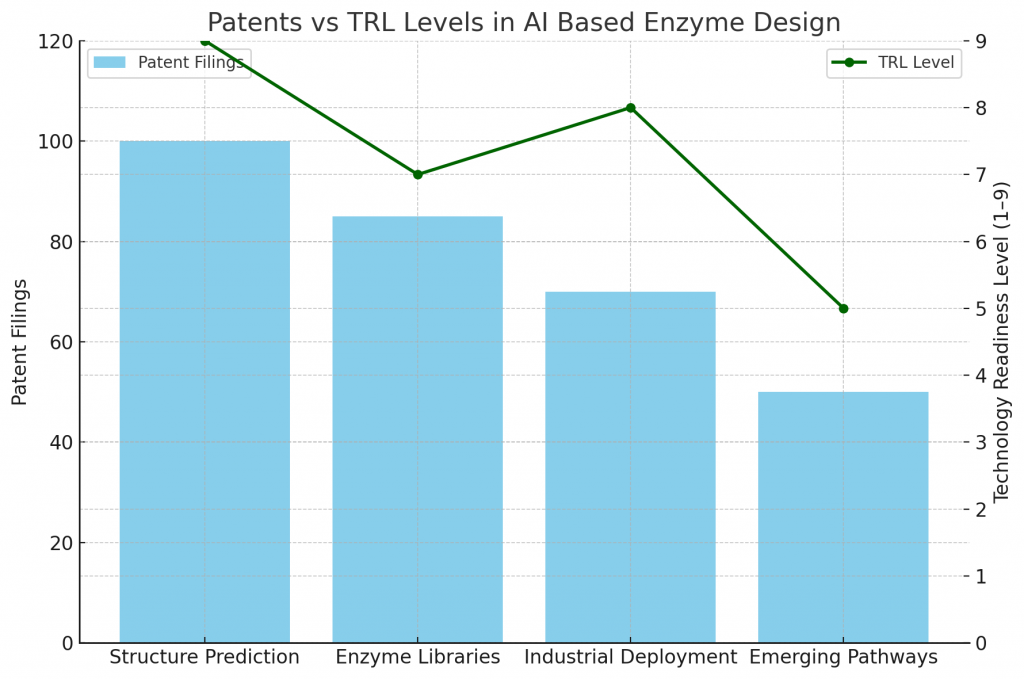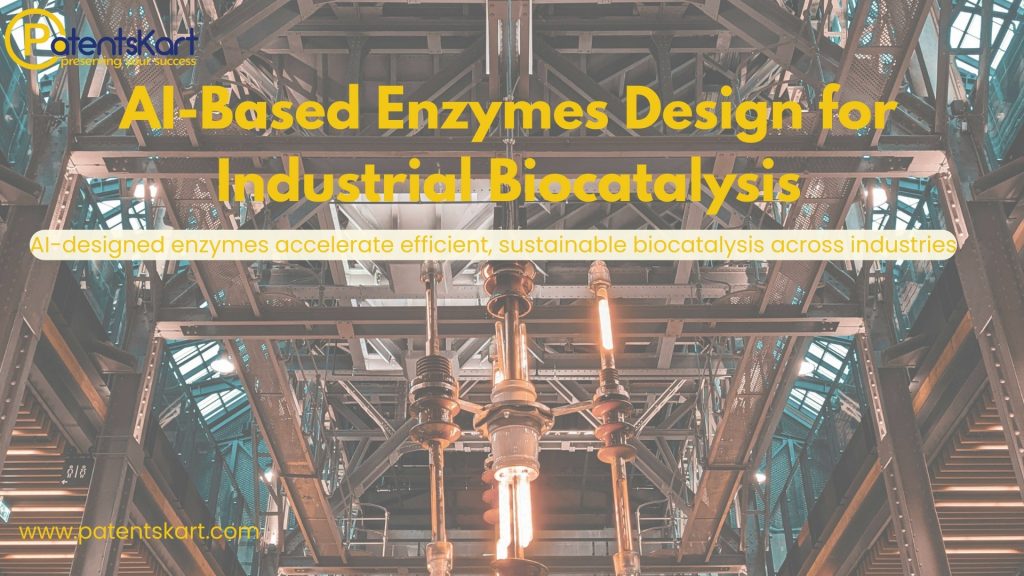What Is AI Based Enzyme Design and How Is It Transforming Industrial Biocatalysis?
Enzymes are the workhorses of life, catalyzing reactions that sustain biology and industry alike. In sectors ranging from pharmaceuticals to energy, enzymes reduce energy demands, lower costs, and enable processes that conventional chemistry cannot achieve efficiently. Yet designing effective enzymes has long been a bottleneck, limited by slow lab evolution and trial-and-error experimentation. The emergence of AI based enzyme design changes this picture dramatically, opening new frontiers in industrial innovation.
By applying machine learning, deep neural networks, and structural prediction tools, AI based enzyme design provides accurate insights into protein folding, active site dynamics, and catalytic performance. These breakthroughs speed up enzyme engineering, reducing costs and helping industries adopt sustainable bioprocessing strategies at scale. As computational biology merges with practical biocatalysis, industries gain the ability to rapidly create tailored enzymes for cleaner and greener chemistry.
What Is AI Based Enzyme Design in Simple Terms?
In essence, AI based enzyme design is the application of artificial intelligence to predict, model, and optimize enzyme structures for specific reactions. Instead of relying solely on costly experiments, algorithms analyze sequence data, predict 3D conformations, and simulate interactions with substrates.
Core components include:
- Protein sequence analysis: Identifying motifs and domains relevant to catalysis.
- Structure prediction: Using AI-driven tools like AlphaFold to model folding and binding pockets.
- Activity forecasting: Estimating turnover rates, substrate scope, and selectivity.
- Mutational design: Recommending beneficial amino acid substitutions to improve stability.
Through these methods, AI based enzyme design offers precision and speed that traditional enzyme engineering methods cannot match.
Why Is AI Based Enzyme Design Critical for Industrial Biocatalysis?
Industrial biocatalysis relies on enzymes to catalyze large-scale reactions for chemicals, fuels, and pharmaceuticals. The challenge lies in creating enzymes that can withstand industrial environments, such as high temperatures, unusual solvents, or extreme pH levels.
Here’s how AI based enzyme design adds value:
- Tolerance prediction: Algorithms identify modifications that improve thermal and solvent stability.
- Pathway engineering: AI suggests enzyme combinations for multi-step reactions.
- Cost reduction: Reduces the need for costly lab-based directed evolution.
- Broader adoption: Encourages industries hesitant about enzyme performance.
By bridging enzyme engineering with computational intelligence, industries can now adopt tailored catalysts quickly, powering sustainable bioprocessing at scale.
What Are the Main Benefits of AI Based Enzyme Design?
The benefits span across science, economics, and the environment:
- Speed: Cuts down discovery timelines from years to months.
- Cost-efficiency: Reduces trial-and-error experimentation.
- Accuracy: Improves prediction of enzyme-substrate interactions.
- Sustainability: Promotes greener, cleaner industrial chemistry.
- Flexibility: Enables protein design for niche and novel reactions.
For companies under pressure to decarbonize, AI based enzyme design provides a roadmap to implement sustainable bioprocessing solutions with confidence.
What Are the Applications and Use Cases?
Applications are broad, cutting across several industries:
- Pharmaceuticals: Creating enzymes for drug synthesis with fewer steps.
- Food & beverages: Designing enzymes for brewing, dairy, and flavor development.
- Energy: Developing biocatalysts for biofuels and hydrogen production.
- Textiles: Enzymes for fabric processing with lower water use.
- Chemicals: Tailored enzymes for plastics degradation and green solvents.
- Healthcare: Enzyme-based diagnostics and biosensors.

These examples prove how AI based enzyme design is at the center of a new industrial revolution.
Which Companies Are Leading in AI Based Enzyme Design?
Several established corporations and startups are pushing boundaries:
- Codexis – Specializes in biocatalyst optimization for pharma and chemicals.
- Ginkgo Bioworks – Uses AI and synthetic biology for custom enzymes.
- Zymergen – Focused on high-throughput enzyme and material design.
- Arzeda – Computational protein design startup targeting multiple industries.
- Novozymes – Market leader in industrial enzymes now incorporating AI.
- Inscripta – Genome editing platform supporting enzyme optimization.
Each of these organizations is proving that AI based enzyme design can move from theoretical promise to industrial-scale solutions.
Which Startups Are Innovating Rapidly?
Agile startups bring fresh approaches to the ecosystem:
- DeepCure – AI-driven enzyme drug design.
- Biomatter Designs – Generative AI for protein design.
- Protera Biosciences – Sustainable food enzymes using computational biology.
- Peptone – AI for protein stability and solubility optimization.
- Evonetix – DNA synthesis for enzyme pathway engineering.
Startups thrive by combining protein design with deep learning, making AI based enzyme design more agile and accessible.
What Do Patents and TRL Levels Say About Maturity?
Patent filings are concentrated in:
- Computational platforms for enzyme optimization.
- Generative models for novel protein design.
- Sustainable processes enabled by biocatalysis.
- Hybrid workflows blending lab automation with AI modeling.
Technology Readiness Levels (TRLs) highlight maturity:
- Structure prediction tools: TRL 9, widely validated.
- AI-driven enzyme libraries: TRL 6–8, in advanced pilots.
- Industrial deployment: TRL 7–9 in pharma and food.
- Emerging pathways: TRL 4–6 in energy and new materials.

Together, these signals show that AI based enzyme design is moving swiftly toward commercial adoption.
What Challenges Limit Adoption Today?
Despite progress, hurdles remain:
- Data quality: Training AI requires vast, reliable datasets.
- Integration gaps: Bridging lab automation with computational biology tools.
- Scalability: Ensuring enzymes remain effective outside lab conditions.
- Cost barriers: Upfront expenses for AI and infrastructure.
- Skill gaps: Need for cross-disciplinary talent in AI and biocatalysis.
Overcoming these bottlenecks will be essential to unlock the full power of AI based enzyme design.
What Is the Future of AI Based Enzyme Design?
Looking ahead, several trends stand out:
- Generative AI: Designing novel proteins from scratch.
- Quantum computing: Accelerating simulations of enzyme-substrate dynamics.
- Cloud labs: Fully automated discovery pipelines.
- Circular economy: Enzymes for recycling plastics and bio-based materials.
- Global collaboration: Shared databases to improve predictions.
With these developments, AI based enzyme design will transform industries and lead the way to sustainable bioprocessing.
How Can PatentsKart Help in This Space?
PatentsKart provides the tools innovators need to succeed with AI based enzyme design:
- Patent landscapes to identify opportunities and white spaces.
- Freedom-to-operate analysis to mitigate IP risks.
- Competitor benchmarking for strategic insights.
- TRL tracking to align R&D with market readiness.
- Licensing support to accelerate technology transfer.
Our expertise ensures that companies using AI based enzyme design can innovate confidently and bring solutions to market faster.
Conclusion
AI based enzyme design represents a new era of biotechnology, where artificial intelligence accelerates discovery and enables industries to create enzymes with unprecedented precision. By transforming industrial biocatalysis, improving sustainability, and cutting development costs, this technology stands at the heart of the bioeconomy.
Companies that embrace AI based enzyme design today will be leaders in the sustainable industries of tomorrow.
FAQs About AI Based Enzyme Design
Q1. What is AI based enzyme design in simple words?
It is the use of AI to predict and optimize enzyme structures for faster and more accurate industrial use.
Q2. How does it benefit industrial biocatalysis?
It improves enzyme stability, reduces costs, and accelerates deployment in large-scale processes.
Q3. Which industries benefit most?
Pharma, food, textiles, chemicals, and energy are leading adopters.
Q4. What challenges exist in adopting this technology?
Data quality, scalability, integration, and skill shortages remain key hurdles.
Q5. How does PatentsKart support innovators?
We provide patent insights, competitor analysis, and TRL roadmaps to guide safe commercialization.







